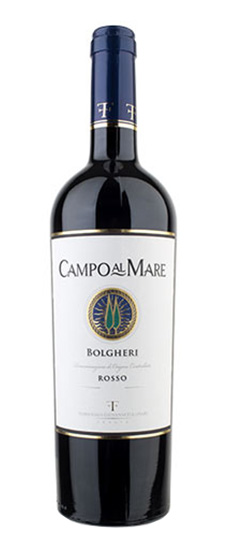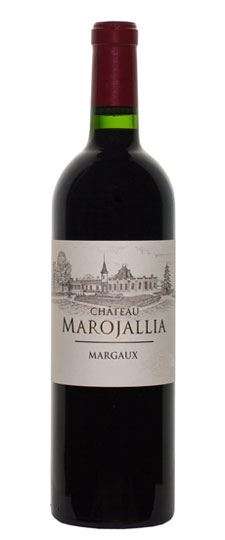Wine Score
Grape Variety
Bordeaux Blend Red Wine
A Bordeaux Blend, at its most basic, is any combination of those grape varieties typically used to make the red wines of Bordeaux. The phrase, which seems to have originated with British wine merchants in the 19th Century, relates as much to wines made from the blend as to the grape variety combination itself (© Copyright material, Wine-Searcher.com). Far from being an officially defined or legal term, it is almost never used for wine-labeling purposes (although it occasionally appears on back labels). Its equivalent in the United States is Meritage, which is not only legally defined, but also a registered trademark.
Red Bordeaux Blends are known for their powerful structure and deep flavors. Dark fruits and berries such as plum and blackcurrant are commonly used to describe the flavors of red Bordeaux, although there is an unlimited range of terms that have been ascribed to them. Tannins tend to be relatively high in these wines, giving them a firm structure.
 Cabernet Sauvignon is widely accepted as a compulsory component of any Bordeaux Blend, with Merlot following close behind. In fact, the majority of Bordeaux Blend wines are often made exclusively from a blend of these two varieties. The remaining components are Cabernet Franc, Petit Verdot and Malbec, used in varying combinations and proportions. Even Carmenere is on the list of possible ingredients, despite being rarely used by modern Bordeaux vineyards (notable exceptions include Haut-Bailly, Brane-Cantenac and Clerc-Milon).
Cabernet Sauvignon is widely accepted as a compulsory component of any Bordeaux Blend, with Merlot following close behind. In fact, the majority of Bordeaux Blend wines are often made exclusively from a blend of these two varieties. The remaining components are Cabernet Franc, Petit Verdot and Malbec, used in varying combinations and proportions. Even Carmenere is on the list of possible ingredients, despite being rarely used by modern Bordeaux vineyards (notable exceptions include Haut-Bailly, Brane-Cantenac and Clerc-Milon).
With the global wine industry expanding and developing at pace, the use of the term “Bordeaux Blend” is changing. Although a product of the Old World, it remains a useful concept, allowing the wine industry and enthusiasts everywhere to talk about Bordeaux-style red wines as an international group, irrespective of regionality.
Flexibility and a useful vagueness are key assets of the term “Bordeaux Blend”, but are also its Achilles’ heel; if it becomes too broad or too widely used it will lose its meaning. Is a Bordeaux Blend still a Bordeaux Blend if it contains Zinfandel, Sangiovese or Syrah? Without a formal definition to go by, the answer to that question lies entirely in the collective consciousness of those who use the phrase. Provided that Bordeaux’s vignerons don’t discover a new grape variety (Cabernet Sauvignon is only a few hundred years old), the term’s definition remains relatively clear.
The red Bordeaux style has reached almost every winegrowing country, with new candidates looking to emulate Bordeaux’s success. North and South America, Australia, South Africa and New Zealand all have their own expressions of the Bordeaux Blend. Even countries in North Africa and the Middle East produce their own interpretations of the style.
For more information on the various permutations of the Bordeaux Blend, please see Cabernet Sauvignon – Merlot, Cabernet Franc – Cabernet Sauvignon or Cabernet Franc – Merlot.
Food matches for Bordeaux Blend wines include:
Steak entrecôte marchand de vin (red-wine sauce and shallots)
Grass-fed wagyu rib-eye fillet
Roast leg of lamb with rosemary and garlic
Region
Bolgheri Wine
Bolgheri, on the Tuscan coast just south of Livorno, is one of Italy’s most prestigious vineyard areas. Its winemaking zone is made up of sloping coastal vineyards at the foot of the hills between the town of Bolgheri, after which this DOC is named, and the southern part of Castagneto. Located in close proximity to the Tyrrhenian Sea, it has been described as ‘the golden oasis of the Maremma’ (an area of south-western Tuscany and northern Lazio).
In the 1960s the Tuscan wine industry was in need of a shake-up, and Bolgheri became one of the avante-garde areas that helped bring this region back to life. One of the tactics was to start a new trend of non-DOC wines, and in 1968 an innovative style of wine was named the Super Tuscan. The flagship ‘Super Tuscan’ wine was Sassicaia – a Bordeaux-style red created from vines often (erroneously) reported to have come from Chateau Lafite-Rothschild in Bordeaux. Sassicaia returned Bolgheri and Tuscany into the limelight. Sassicaia was also the first and only Italian wine to be honored with its own single-estate classification: thus in 1994, Bolgheri and Bolgheri Sassicaia DOC were born.
 A vineyard in Bolgheri, Tuscany
A vineyard in Bolgheri, Tuscany
The main focus of the Bolgheri DOC is the importance of terroir and for this reason, the Bolgheri Rosso and Bolgheri Superiore wines are labeled without the mention of grapes, as terroir is considered more significant than grape varieties. It is also why Bolgheri wines are reputed for their true expressions of terroir.
Nevertheless, the varieties that put Bolgheri on the wine map are the Bordeaux trio Cabernet Sauvignon, Cabernet Franc and Merlot, which are the main ingredients in the superiore wine. Syrah and the traditional Tuscan red grape Sangiovese may comprise up to 50% of the wine each, as can a maximum 30% of Petit Verdot. The plain rosso must be aged for at least ten months, while the superiore must mature for 24 months before release.
The wines from this area are incredibly compact, dark and ruby red in color, which suggests great ageing potential. The heady bouquets are reminiscent of ripe berries, with hints of Mediterranean maquis (the main vegetation along the Mediterranean coastline) and spicy oak. They are characterized by their powerful structure, elegant poise and smooth, rounded natures. A sweetness of fruit on the palate is backed by layers of velvety tannins, a lively, fresh acidity and a long, lingering finish.
In addition to its iconic reds, the Bolgheri DOC title also covers white and rosé wines. The key white wine grape used in Bolgheri Bianco is Vermentino, sometimes with an addition of Sauvignon Blanc and Viognier. There are some examples of barrel-matured whites which display more complexity. Rosato di Bolgheri can be made from a combination of Sangiovese, Cabernet Sauvignon, Merlot, Syrah and other Tuscan grapes – this produces fresh, fruity and savory rose wines.
Producer Notes
Ambrogio and Giovanni Folonari

The Folonari family works in the wine branch since the end of 1700.
The Folonari family has been making wine since the late eighteenth century. In 1825 the family-owned business took the name “Fratelli Folonari” and adopted the mission of developing, producing and distributing the finest Italian wines throughout the world. In 1912, Italo Folonari – Ambrogio Folonari’s grandfather – and his brother Francesco purchased the Ruffino company in Tuscany that was famous for its Chianti wine in straw-covered flasks. After World War II, major changes in terms of economic development and improving standards of living began taking place in Italy. This also affected the wine industry where the Folonari family and Ambrogio in particular were among the first to promote this trend by producing new, high quality wines that contributed to creating the “new frontier” of the Italian wine.




![Amuse Bouche, Napa Valley [Merlot/Cabernet Franc] 2010](https://www.wineyou.com/wp-content/uploads/2017/06/Amuse-Bouche-Napa-Valley-Merlot-Cabernet-Franc-2010.jpg)


